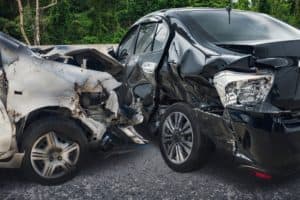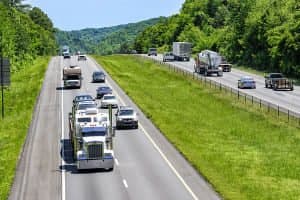
Leaders in Colorado and in Denver have proposed an ambitious plan to reduce the number of traffic-related deaths in the state to zero by 2030. The initiative, “Moving Towards Zero Deaths” aims to launch a new era of transportation safety through redesigned streets, better data collection, and effective prevention programs.
The plan seeks to stem the tide of rising motor vehicle accidents fatalities in Colorado. The year 2016 was the deadliest recent year on Colorado’s highways with more than 500 people killed in crashes.
According to the Colorado Department of Transportation (CDOT), the odds of severe injury or death involving a motorist on the roads of the Golden State are steadily increasing.
Fatal accidents in Colorado
 Between 2000 and 2008, Colorado was successful in achieving a 24 percent reduction in traffic fatalities, exceeding any other state.
Between 2000 and 2008, Colorado was successful in achieving a 24 percent reduction in traffic fatalities, exceeding any other state.
Officials have sought to explain the recent surge of traffic-related fatalities. One reason could be the economy. Job growth combined with low gas prices have put more commuters on Colorado’s roads. Approximately half of all victims of vehicle fatalities failed to buckle their seatbelts. The number of deaths involving drivers not wearing seatbelts has led state officials to propose legislation that would require police officers to pull over any motorist who is not buckled up.
Another contributor to a significant portion of fatal crashes in Colorado is alcohol. For instance, in 2015, 32 percent of traffic deaths in Colorado were the result of a motorist driving under the influence.
The most alarming trend in traffic-related deaths is distracted driving. In 2016, 67 deaths in Colorado involved distracted drivers, many using cell phones. The Colorado State Patrol plans on cracking down on what some have described as an epidemic problem on Colorado’s roads.
Vision Zero Action Plan in Denver
The dangers on Colorado’s roads are especially pronounced in Denver. Unlike other municipalities of similar size, Denver has a higher crash rate per population than comparable cities.
For example, in 2014, traffic accidents in Denver claimed the lives of 6.3 people per 100,000 residents, compared to 2.7 in Seattle and 1.7 in Minneapolis.
Using the philosophy that every traffic accident is preventable, Denver leaders have crafted a Vision Zero Action Plan that is complementary to the statewide Moving Towards Zero initiative.
The action plan will establish a roadmap to eliminate traffic fatalities in the Denver community.
 Street designs can influence driver, bicyclist, and pedestrian behavior. More than 100 deaths have occurred on Denver’s roads since January 2016. The city’s action plan targets high-risk corridors such as Federal Boulevard and Colfax Avenue that are in dire need of changes.
Street designs can influence driver, bicyclist, and pedestrian behavior. More than 100 deaths have occurred on Denver’s roads since January 2016. The city’s action plan targets high-risk corridors such as Federal Boulevard and Colfax Avenue that are in dire need of changes.
In Denver, 50% of traffic fatalities occur on only 5% of its streets. Though it isn’t always possible to predict human behavior, roads should provide safe paths to avoid severe injury or loss of life for all modes of traffic.
The action plan also suggests reducing speed limits on Denver roads as a solution. Common sense dictates that higher speeds increase the risk of not only vehicle crashes, but also the chances of serious or fatal injury.
To reduce the number of traffic-related fatalities in Denver to zero, it is necessary to consider additional factors. For instance, a study of over 300 locations in Denver between 2013 and 2017 showed that motorists are more likely to speed on streets with higher speed limits. Roads with a 25-mph speed limit saw 25% of motorists driving five miles per hour above the posted speed limit. Streets with a 35-mph speed limit saw 54% of drivers speeding by at least five miles per hour above the speed limit.
In Denver, roads with more fatalities, such as Federal Boulevard and Colfax Avenue, have higher speed limits and speeding problems. These streets are already under consideration for changes to address safety issues.
Analyzing Colorado Car Crash Data
Denver’s crash data indicate that speeding, aggressive driving, drunk driving, and failure to use a seatbelt are significant issues. The age of the driver, mental health, and other environmental factors may also be to blame.
 To reduce the number of traffic fatalities to zero by 2030, the action plan calls on prevention-based approaches. These include education and social service programs. By promoting education and engagement, the action plan hopes to promote a culture of safety based on collaboration and partnership within the Denver community. Law enforcement is a valuable resource for ensuring that residents follow all traffic rules.
To reduce the number of traffic fatalities to zero by 2030, the action plan calls on prevention-based approaches. These include education and social service programs. By promoting education and engagement, the action plan hopes to promote a culture of safety based on collaboration and partnership within the Denver community. Law enforcement is a valuable resource for ensuring that residents follow all traffic rules.
To reduce the number of deadly vehicle crashes, the action plan calls on city officials to collect more data on fatal traffic accidents.
Armed with sophisticated information, Denver can significantly mitigate its traffic fatalities. Improving data quality is an essential ingredient for a greater understanding of the factors and circumstances that result in fatal traffic accidents.
The state of Colorado has made advancements in data collection. These data include statistics about crash circumstances and details on the victims involved, but incomplete records and under-reporting are still a problem. Crash data is only one piece of the puzzle, and other sources of data, such as hospital and EMS records, are important to consider as well. Data sharing among different sources can be analyzed with predictive data analytics as part of the Denver Smart City Program.
Vision Zero and The Wilhite Law Firm
Denver leaders have worked on the Vision Zero Action Plan for nearly two years. These officials have partnered with a host of stakeholders, such as WalkDenver, BikeDenver, Inter-Neighborhood Cooperation, and the mayor’s pedestrian and biking advisory committees.
The Wilhite Law Firm has partnered with CDOT as part of the statewide Moving Towards Zero initiative. Our law firm is active in the Denver community promoting safe driving practices. The Wilhite Law Firm is committed to working with community leaders to address Denver’s traffic safety issues. We want to make our community and state safer until the number of fatal crashes reaches zero.






















